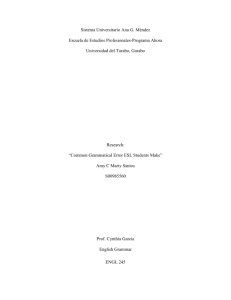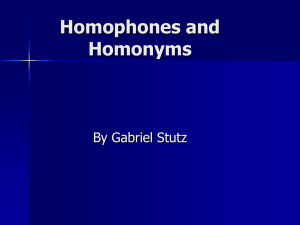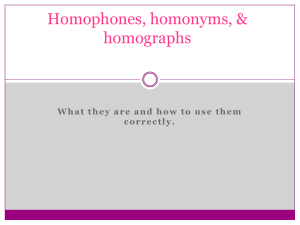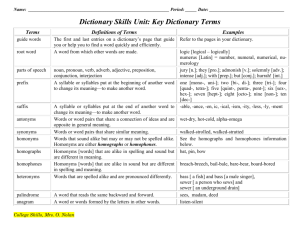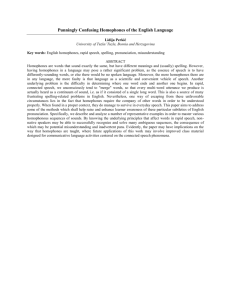File
advertisement
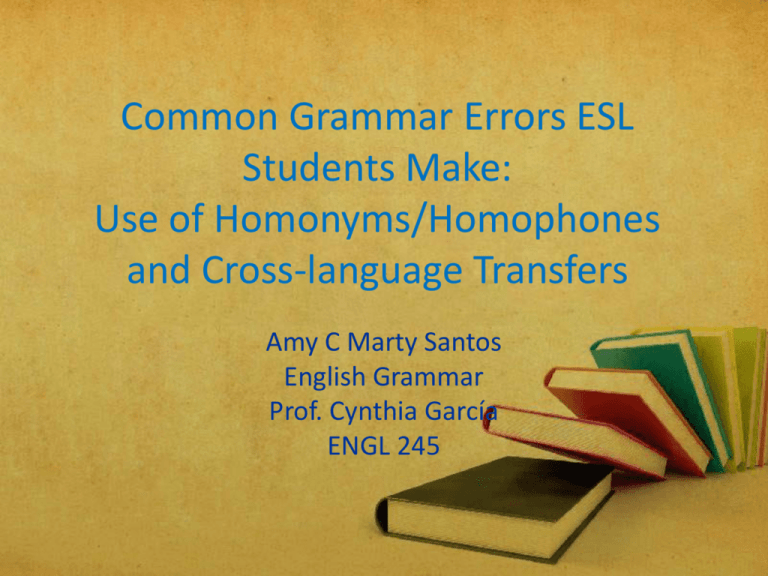
Common Grammar Errors ESL Students Make: Use of Homonyms/Homophones and Cross-language Transfers Amy C Marty Santos English Grammar Prof. Cynthia García ENGL 245 Introduction • ESL learners- or ELL’s- often have a tough time with grammar because they are not continuously exposed to the language since an early age. • One of the most troublesome areas tends to be the use of homonyms/homophones and cross language transfers. What are homonyms/homophones? • Homophones are words that are pronounced alike yet have different spelling. • For example: sail-sale, night-knight, bare-bear. • Homonyms include homophones and words that are spelled the same but have different meanings. • Examples: bank – edge of a river vs. a financial institution, bark – sound a dog makes vs. a layer of a tree. Cross Language Transfers • Cross language Transfer can also be known as linguistic interference. • It occurs when the learner applies knowledge from one language to another. • Negative transfers are when the transfer items are not the same in both languages. • Example: embarazada/embarrassed. Why are they troublesome? • Both can completely distort the meaning of a sentence with only one word. • Homophones can be especially confusing in writing. • Linguistic Transfers can alter writing and speaking. How can we overcome it? • • • • Building vocabulary Constant exposure Patience Practice makes Perfect!!!! References • Brians, P. (2013, November). Common Errors in English Usage. (3rd Edition). Washington State University, WA. Retrieved March 19, 2015, from http://public.wsu.edu/~brians/errors/errors.html • EnchantedLearning.com. (2002-2015). Homophones/Homonyms. Retrieved March 18, 2015, from Enchanted Learning: http://www.enchantedlearning.com/english/homonyms/ • Folse, K. (2009, October). Why K-12 Techers Need To Know AbouT ESL Grammar Issues. Volume 6, Issue 3-4. University of Central Florida, FL: TESOL International Association. Retrieved March 18, 2015, from http://www.tesol.org/read-andpublish/journals/other-serial-publications/compleat-links/compleat-links-volume6-issue-3-4-(october-2009)/why-k-12-teachers-need-to-know-about-esl-grammarissues • Pesce, C. (2007-2015). 10 Biggest ESL Grammar Mistakes and How to Keep Your Students from Making Them. Retrieved March 18, 2015, from BusyTeacher.org: http://busyteacher.org/18253-10-biggest-esl-grammar-mistakes-studentsmake.html
